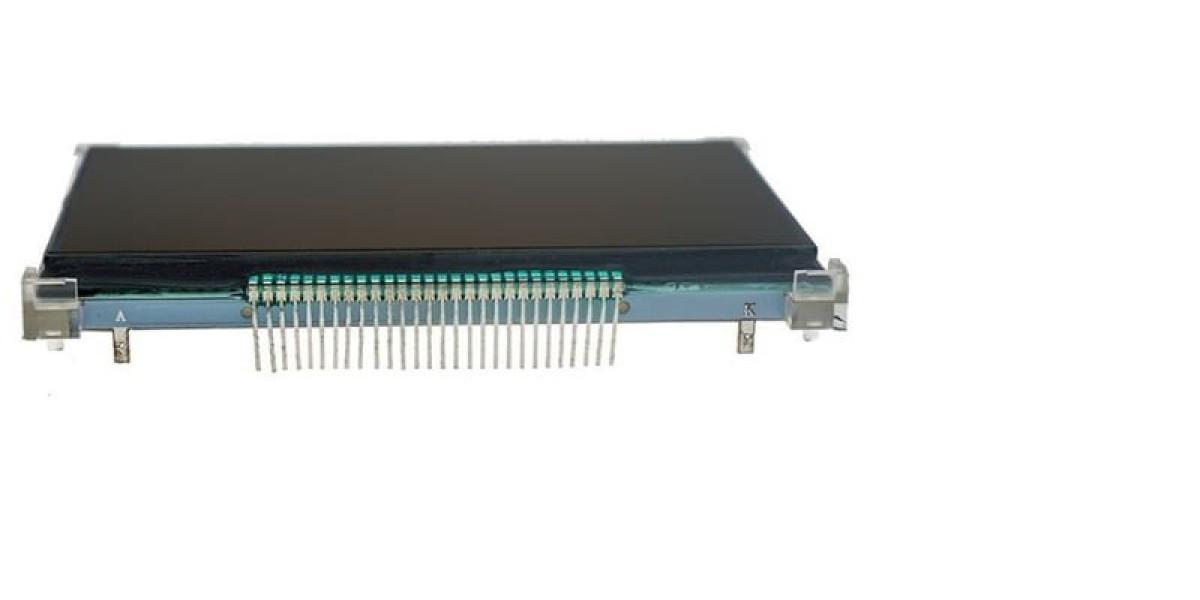When it comes to designing embedded systems or other electronics projects, a 128x64 LCD display is a popular choice for its versatility and ease of integration. These displays are widely used in industrial equipment, medical devices, IoT applications, and more, offering a reliable solution for graphical and textual data representation. However, choosing the right display can be challenging due to the wide variety of options available. This guide will help you understand the top features to consider when buying a 128x64 LCD display for your project.
1. Display Type: COG Technology
The Chip-on-Glass (COG) technology is a key feature to look for in a 128x64 LCD display. COG displays, like the 128x64 S COG White LCD Display (LC-553-D), have the driver IC mounted directly on the glass, making them more compact and lightweight compared to traditional LCD modules. This design improves durability and ensures better signal integrity.
Why it matters: Ideal for compact designs with limited space, such as handheld devices or portable gadgets.
2. Resolution and Clarity
The 128x64 resolution is a standard for small graphical displays, providing a balanced pixel density that supports clear text and simple graphics. The sharpness of the display ensures that all information is legible, even on a small screen.
Key consideration: Ensure the resolution fits your application’s requirements. For instance, medical devices might require crisp graphics, while industrial tools might prioritize text clarity.
3. Backlight and Display Color
For readability in various lighting conditions, the display’s backlight and color options are essential. The white backlight on displays like the LC-553-D offers excellent contrast, making it easier to read in both dim and bright environments.
Why it matters: Choose a backlight that aligns with your project’s operating conditions, such as outdoor or low-light environments.
4. Interface Options
The communication interface determines how easily the display integrates with your system. Many 128x64 LCD displays support SPI or I2C interfaces, which are efficient and widely supported by popular microcontrollers like Arduino, Raspberry Pi, and STM32.
Tip: Confirm that the interface is compatible with your controller for seamless communication.
5. Operating Voltage
The operating voltage is crucial for ensuring compatibility with your system. Most 128x64 LCD displays operate on 3.3V or 5V, making them versatile for different platforms. The LC-553-D display, for example, supports a wide voltage range, ensuring it works with various power supply configurations.
Why it matters: Check the voltage requirements of your display to avoid compatibility issues or additional circuitry.
6. Temperature Range
If your project operates in extreme environments, the display’s operating temperature range becomes a critical factor. A robust display can function reliably in temperatures ranging from -20°C to +70°C, making it suitable for industrial and outdoor applications.
Key tip: Ensure the display meets your project’s environmental requirements, especially for rugged or outdoor devices.
7. Viewing Angle and Contrast Ratio
The viewing angle determines how easily the display can be read from different positions. Displays with a wide viewing angle and high contrast ratio ensure readability in various orientations.
Why it matters: For user interfaces visible to multiple users or at odd angles, prioritize a display with a wide viewing angle.
8. Ease of Integration
The physical design of the display, including its dimensions and mounting options, plays a significant role in integration. The LC-553-D, for example, features a compact design with straightforward mounting options, making it easy to incorporate into your project.
Pro tip: Verify the dimensions and connector type before purchasing to ensure compatibility with your design.
9. Durability and Lifespan
For long-term projects, the durability and lifespan of the display are essential. COG displays are known for their robust construction, but you should also consider the quality of the backlight and materials used.
Why it matters: A durable display reduces maintenance costs and ensures reliability over time.
10. Cost and Availability
While functionality is key, your project’s budget also plays a role. Choose a display that offers the features you need at a reasonable price. The 128x64 S COG White LCD Display (LC-553-D) from Campus Component strikes a perfect balance between cost and performance.
Tip: Purchase from reliable suppliers to ensure product quality and after-sales support.
Applications of 128x64 LCD Displays
Industrial control panels: Display real-time data and status updates.
Medical devices: Show patient information and monitoring data.
IoT systems: Provide user feedback and sensor readings.
Consumer electronics: Ideal for compact devices like calculators or remote controls.
Educational kits: Commonly used in projects to teach programming and electronics.
Why Choose the LC-553-D from Campus Component?
The 128x64 S COG White LCD Display (LC-553-D) is a reliable choice for professionals and hobbyists alike. Its compact size, clear display, and easy integration make it ideal for various applications. Available on Campus Component, it offers unmatched quality and technical support, ensuring a hassle-free experience.









